
Table of Contents
- How Sitting Affects Core Muscles
- Key Features of an Office Chair for Core Strength
- Best Office Chairs for Core Strength
- 1. Autonomous ErgoChair Pro – My Go-To Ergonomic Chair
- 2. Autonomous ErgoStool – The Best for Active Sitting
- 3. HAG Capisco Adjustable Standing Desk Chair – The Most Versatile Option
- 4. Uncaged Ergonomics Wobble Stool – Great for Movement
- 5. Tango Ergonomic Active-Sitting Chair – Designed for Core Activation
- Tips for Strengthening Your Core While Sitting
- FAQs
- Conclusion
If you're anything like me, you know the struggle of sitting for long hours and feeling the stiffness creep in. I’ve spent years testing ergonomic furniture, and one thing I’ve learned is that traditional office chairs don’t do much for core engagement. Most chairs are built for support, but they don’t encourage movement or muscle activation. That’s why upgrading to an office chair designed for active sitting is a game-changer.
With the right office chair, you can actively engage your core muscles, improve posture, and even reduce back pain while working. I’ve personally seen how switching to an active sitting chair transformed my daily routine—I no longer slouch, and my lower back pain has drastically improved.
The reality is that sitting for too long has serious health effects, from weakened muscles to poor circulation. If you’re dealing with discomfort, you’re not alone. Check out the effects of prolonged sitting to understand why movement matters.
In this guide, I’ll walk you through what to look for in a core-strengthening chair and share the best office chair for core strength options that truly make a difference.
How Sitting Affects Core Muscles
Let’s be honest—most of us don’t think about our core muscles when we sit. But after spending years in the ergonomic industry, I’ve realized that sitting passively weakens our core.
When you’re sitting in a standard office chair, your core doesn’t have to work at all. The chair takes over the job of supporting your back, and over time, your postural muscles weaken. I’ve experienced this firsthand—after years of working at a desk, I noticed my core strength fading, leading to slouching, back pain, and poor posture. It wasn’t until I became more aware of proper posture at a desk that I started making real changes.
One major issue I dealt with was slouching in my chair without realizing it. If you find yourself in the same habit, these strategies to kick slouching in chairs can help you stay aligned and engaged.
Another thing I overlooked was my typing posture. I used to hunch over my keyboard, which only worsened my back pain. Adjusting to a proper typing posture made a big difference in how my shoulders and back felt by the end of the day.
But it’s not just about your upper body—your lower body plays a role too. Sitting for long hours can lead to circulation issues, like feet swelling while sitting at a desk. Keeping my feet positioned correctly and taking small movement breaks helped prevent this uncomfortable issue.
Switching to the best desk chair for core strength forces your muscles to stay engaged, helping you maintain an upright posture naturally. I can honestly say that after making the change, my posture improved, my back pain reduced, and I even felt more energized throughout the day. Whether you’re writing, typing, or simply sitting at your desk, focusing on proper writing posture will keep your core activated and your spine in alignment.
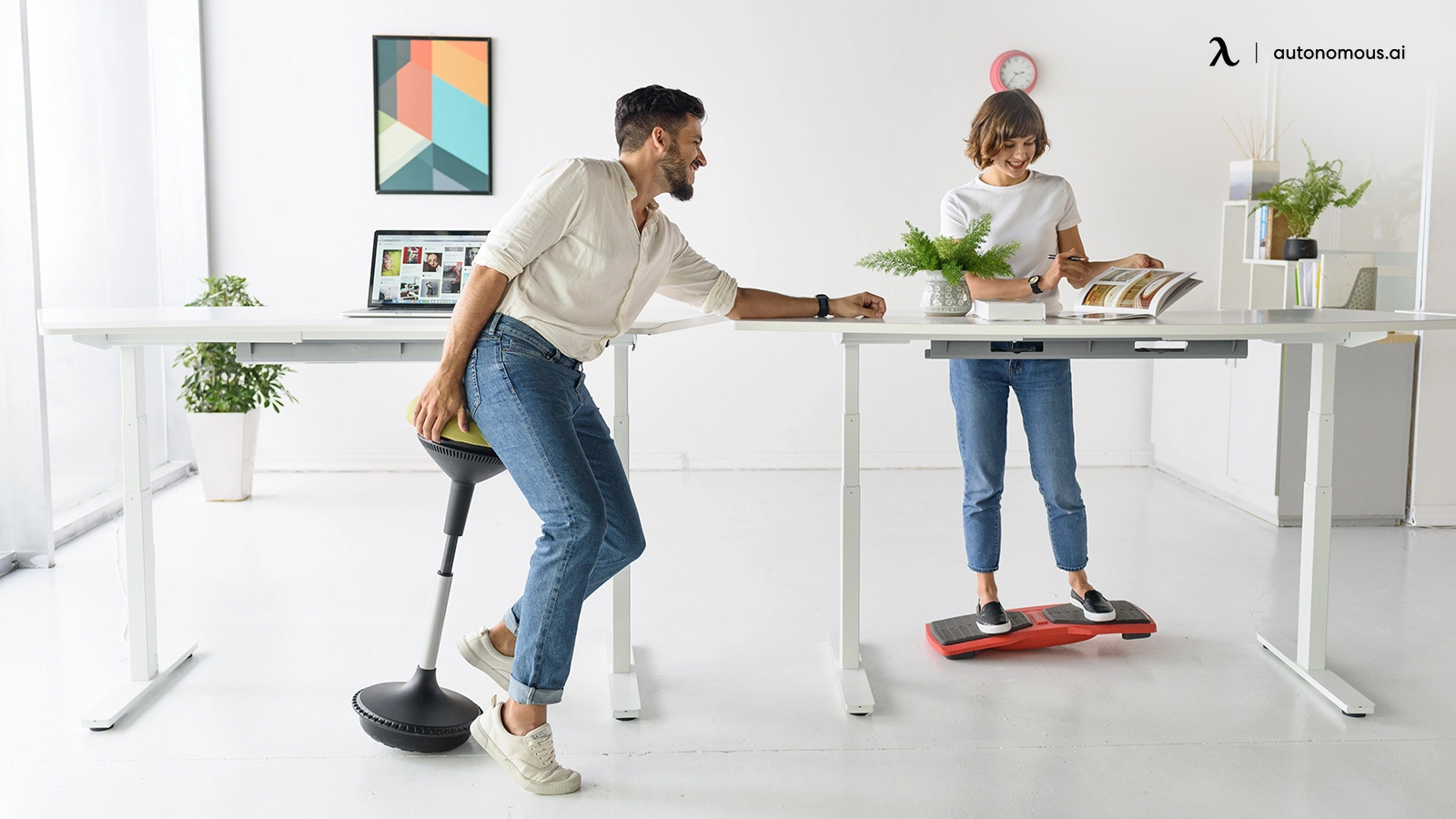
Key Features of an Office Chair for Core Strength
When choosing a core-strengthening office chair, I always look for the following features. Over the years, I’ve tested different options, and these elements make the biggest difference in engaging core muscles while providing the right balance of comfort and support.
1. Balance & Stability
A good core-activating chair encourages micro-movements to keep muscles engaged. Unlike traditional chairs that hold you in a fixed position, I’ve found that chairs with a dynamic base or wobble mechanism—like a standing desk chair or an ergonomic stool for a standing desk—are the best at promoting continuous small adjustments.
If you prefer a chair with stability but still want some movement, a swivel desk chair is another great option. It allows for natural twisting and rotation, keeping the lower back and core engaged.
2. Adjustable Seat & Height
If a chair isn’t height-adjustable, it won’t allow for proper posture. I learned the hard way that sitting too high or too low can strain the lower back, causing unnecessary discomfort. A fully adjustable chair ensures that:
- Your feet stay flat on the floor
- Your knees remain at a 90-degree angle
- Your core is properly engaged
A drafting chair is a great option if you work at an elevated desk, ensuring proper alignment even at higher seating positions. For extended sitting sessions, I always recommend an office chair for long hours that supports postural changes throughout the day.
3. Backless or Minimal Support Designs
At first, I was skeptical about backless chairs, but after testing options like the ErgoStool, I saw how much they engage core muscles. Without a backrest to lean on, your core has to do the work, which naturally improves posture over time.
A small office chair with a low-profile design can also promote better posture, as it encourages sitting closer to the desk, preventing slouching.
4. Tilting & Dynamic Mechanisms
I always recommend chairs with a tilting mechanism or a rocking base. This feature lets you shift positions and make subtle movements that activate core muscles. If you’re new to tilting chairs, I suggest checking out the different types of tilt mechanisms on office chairs to find the one that works best for you.
A reclining ergonomic chair is another great option if you want the flexibility to lean back and shift weight while keeping your muscles engaged. Some chairs even feature a forward tilt mechanism, which slightly shifts the seat forward, helping to maintain an active, upright posture.
5. Ergonomic Cushioning
Even though the goal is to stay active while sitting, comfort still matters. I’ve found that molded foam seats or memory foam cushions provide the best balance between support and natural movement. A high-quality ergonomic chair for lower back pain usually comes with better seat padding and lumbar support, preventing stiffness while allowing for micro-adjustments.
If you’re looking for an office chair that keeps you comfortable while promoting movement, these core-strengthening options will help you stay engaged and pain-free throughout the day.
Best Office Chairs for Core Strength
1. Autonomous ErgoChair Pro – My Go-To Ergonomic Chair
I’ve tested a lot of ergonomic office chairs, but the ErgoChair Pro stands out as one of the best desk chairs for core strength. Unlike most chairs that promote passive sitting, the ErgoChair Pro encourages an active sitting posture, keeping your core muscles engaged while providing the support needed for long work hours.
One of the biggest things I look for in a chair is comfort, and the ErgoChair Pro delivers on that front. It comes in two material options—cushioned polyester fabric or breathable mesh. Personally, I love the mesh version because it keeps me cool and sweat-free, even when I’m sitting for long periods. If you prefer a softer, more cushioned feel, the fabric option is a great choice.
What makes this chair different is its synchro-tilt mechanism. Unlike static chairs, the ErgoChair Pro’s backrest reclines at a 2-to-1 ratio to the seat angle, meaning that your lower back, legs, and thighs remain supported while you move. This feature is a game-changer for core activation because it allows you to adjust your posture throughout the day without straining your lower back.
I can’t emphasize enough how important breathability is in a chair. The ultra-breathable woven mesh backrest on the ErgoChair Pro keeps airflow constant, preventing the sticky, overheated feeling you get with leather or cheap foam chairs. If you’re like me and tend to feel warm after sitting for a while, this feature is a lifesaver.
One of my favorite features of the ErgoChair Pro is its adjustable lumbar support. The flexible lumbar cushion can be moved up and down to fit different body types, ensuring that your spine stays aligned throughout the day. This is particularly helpful for anyone struggling with lower back stiffness or SI joint pain, as it prevents unnecessary strain and encourages a natural sitting posture.
I love the wide range of adjustability this chair offers. With nine different adjustment points, it’s designed to fit almost any body type and sitting preference. Whether I’m leaning forward to type, reclining back to think, or sitting upright for posture support, the ErgoChair Pro adapts to every position.
If you want an ergonomic chair that blends comfort, support, and movement, the ErgoChair Pro is one of the best investments you can make. It keeps your core engaged, improves posture, and reduces lower back pain, making it the best office chair for core strength in a traditional ergonomic design.
/https://storage.googleapis.com/s3-autonomous-upgrade-3/production/ecm/240715/1(1).jpg)
Autonomous ErgoChair Pro
| Dimensions | 29”L x 29”W x 46” - 50”H |
|---|---|
| Seat dimensions | 20”L x 20”W |
| Seat height | 18” - 20” |
| Back dimensions (w/o headrest) | 21”W x 22”H |
| Back dimensions (with headrest) | 21”W x 28” - 31”H |
| Tilt range | 22° |
| Armrest height | 11” - 14” |
| Armrest height (from the floor) | 26.7” - 32.2” |
| Caster wheel diameter | 2.36 inches |
| Number of caster wheels | 5 pieces |
| Materials | Polyester fabric with molded foam interior and durable nylon plastic frame; PU handrest pads. |
| Colors | Cool Gray, Evergreen, All Black Red Apple, Black & White, Baby Blue |
| Weight capacity | 300 lbs |
| Item weight | 48.5 lbs |
| Shipping dimensions | 29”L x 27”W x 19”H x 67 lbs |
| Assembly required | Yes |
| Warranty | 2 years |
| Free returns | 30 days The trial and return policy does NOT apply to products on sale. |
| Adjustability | Headrest, armrest, back tilt angle and tension, seat tilt and height. |
2. Autonomous ErgoStool – The Best for Active Sitting
If you’re looking for maximum core activation, the ErgoStool is my top recommendation. Unlike traditional chairs that do all the work for you, the ErgoStool encourages active sitting, which means you’re constantly making small adjustments to stay balanced—engaging your core without even thinking about it.
One of the main reasons I love the ErgoStool is its ability to keep my muscles engaged throughout the day. The weighted base gives it great traction on a variety of surfaces, allowing me to rock, tilt, and move naturally while seated. This constant micro-movement prevents stiffness and keeps my core and lower back active, which is a game-changer for anyone dealing with postural fatigue or lower back discomfort.
If you use a standing desk, the ErgoStool is an essential add-on. It lets me perch comfortably without lowering my desk, giving me the option to take low-impact breaks from standing while keeping my posture upright. I find that alternating between standing and perching throughout the day helps increase my energy levels and reduce fatigue.
Another thing I love about the ErgoStool is its 10-inch adjustable height range, making it compatible with both regular desks and standing desks. Unlike traditional chairs that keep you locked in a single position, the ErgoStool allows for movement, which improves circulation and posture naturally.
At first, I wasn’t sure if a backless stool would be comfortable, but I quickly realized that it trains your body to maintain proper posture without requiring extra effort. Over time, I noticed that my core and back muscles felt stronger, and I naturally started sitting up straighter—even when using regular chairs.
We all know that poor posture leads to back pain and stiffness, but few people realize that passive sitting actually weakens the core over time. The ErgoStool forces you to stay engaged, so your muscles stay active without causing strain. It’s not just a chair—it’s a tool for long-term back and core health.
If you want to build core strength, improve circulation, and avoid stiffness, the ErgoStool is the perfect choice. Whether you use it at a standing desk or a traditional workstation, it keeps you moving, engaged, and energized throughout the day.
/https://storage.googleapis.com/s3-autonomous-upgrade-3/static/upload/images/product/galleries/22.59-ErgoStool_B-1584091802842.jpg)
Autonomous ErgoStool
| Dimensions | 13”L x 13”W x 25” - 35”H |
|---|---|
| Seat dimensions | 13”L x 13”W |
| Seat height | 25” - 35” |
| Range of motion | 30° |
| Adjustability | Seat height |
| Materials | Polyester fabric with molded foam interior and durable nylon plastic frame. |
| Certification | UL 2818 - 2013 Gold Standard for Chemical Emissions for Building Materials, Finishes and Furnishings. |
| Colors | Navy Blue, All Black, Cool Gray, Evergreen |
| Weight capacity | 270 lbs |
| Item weight | 22 lbs |
| Shipping dimensions | 53”L x 37.5”W x 33”H x 26 lbs |
3. HAG Capisco Adjustable Standing Desk Chair – The Most Versatile Option
The HAG Capisco Adjustable Standing Desk Chair is unlike any other office chair I’ve tried. It’s designed to let you sit forwards, backwards, or even sideways, making it one of the most versatile active sitting chairs on the market. At first, I was skeptical about its unique saddle-shaped seat, but after using it for a while, I noticed how it naturally encourages a more upright posture while keeping my core engaged throughout the day.
One of my favorite features of the HAG Capisco is its adjustable height range (19”–26”), which makes it ideal for both traditional desks and standing desks. When I need to shift positions, I can perch on the seat at a higher height, maintaining a semi-standing posture that keeps my muscles activated without putting too much strain on my legs. The backrest is curved perfectly to provide subtle lumbar support while allowing freedom of movement.
Another standout feature is the seat depth and back tilt adjustability, which allows me to find the perfect balance between support and mobility. Unlike traditional chairs that lock you into a single position, this one lets me shift and move effortlessly, which prevents stiffness and fatigue.
What really sold me on the HAG Capisco is its ability to increase circulation. The wide saddle seat design opens up the hip angle, promoting better blood flow and reducing pressure on my lower back. I’ve also noticed that it engages my core muscles naturally, even when I’m just sitting still. The ability to sit in multiple positions keeps me from falling into the habit of slouching, which is a major win for my posture and long-term health.
If you’re looking for a chair that breaks the mold of traditional office seating while keeping your body engaged and energized, the HAG Capisco is a fantastic choice. It’s built to accommodate movement, making it perfect for anyone who wants to incorporate active sitting into their work routine without sacrificing comfort.
4. Uncaged Ergonomics Wobble Stool – Great for Movement
The Uncaged Ergonomics Wobble Stool is one of the most engaging and interactive office stools I’ve ever used. Unlike static chairs that encourage passive sitting, this stool keeps me constantly moving, which activates my core muscles and improves posture without requiring much effort.
What makes this stool stand out is its counter-balanced base, which allows for a full range of motion. I can rock, tip, twist, or shift positions as I work, and the stool naturally encourages me to engage my core for balance. The weighted base ensures stability, so I never feel like I’m going to tip over, even when I lean far forward or sideways.
The adjustable height range (23”–33”) makes it perfect for both sitting and standing desks. When I lower it, I can sit comfortably at a traditional desk height, but when I raise it, I can perch at a standing desk without fully sitting down. This keeps my legs and core slightly engaged, preventing stiffness from prolonged standing.
One of the things I appreciate most about the Wobble Stool is how it helps with focus and energy levels. When I’m working on long tasks, the ability to move freely prevents that mid-day slump that often comes with traditional chairs. Plus, I find that subtle movements like rocking and tilting help me stay more mentally alert and physically engaged throughout the day.
Comfort-wise, the Wobble Stool’s seat is generously padded with high-density foam, which provides enough support for extended sitting without feeling too firm. The non-skid base ensures that it grips the floor securely, so I never worry about it sliding around.
Overall, this is a great option for anyone looking to integrate more movement into their workday. Whether you’re using it at a standing desk or just need an alternative to a traditional office chair, the Uncaged Ergonomics Wobble Stool is a fantastic core-strengthening office chair that promotes active sitting and better posture without sacrificing comfort.
5. Tango Ergonomic Active-Sitting Chair – Designed for Core Activation
The Tango Ergonomic Active-Sitting Chair is one of the most effective chairs for core engagement that I’ve used. From the moment I sat on it, I could feel how its design actively encourages movement while maintaining proper spinal alignment. Unlike traditional office chairs that restrict movement, this chair promotes active sitting, keeping my core engaged even when I’m sitting for long periods.
One of the standout features of the Tango Chair is its patented ergonomic mechanism, which allows for subtle tilting and rocking. Unlike a standard wobble stool, the movement is controlled and intentional, ensuring that my posture remains stable while my muscles stay active. I love how this feature prevents stiffness and fatigue, making it an excellent choice for anyone who spends long hours working at a desk.
The sculpted seat is designed for optimal pressure distribution, which prevents sliding and discomfort. Unlike flat seats that encourage poor posture, this one cradles my pelvis and keeps my spine naturally aligned. I was initially unsure about how comfortable this would be for extended use, but I quickly realized that the seat and backrest work together to provide the perfect balance of support and flexibility.
One of the things I love most about this chair is its compact design. It fits neatly under my desk when not in use, making it an ideal option for those with limited space. Despite its small footprint, it delivers big results in terms of core activation and posture support.
Another great aspect of the Tango Chair is that it’s designed for preventative strengthening. If you’re looking for a way to build core strength gradually while improving posture, this chair is an excellent choice. I’ve found that after just a few weeks of using it, my lower back pain has decreased, and I feel more stable when sitting in traditional chairs as well.
Available in three stylish colors (red, black, and blue), the Tango Ergonomic Active-Sitting Chair is not only functional but also aesthetically pleasing. It blends seamlessly into a modern office environment while providing real ergonomic benefits.
If you’re serious about active sitting and core engagement, the Tango Chair is a fantastic investment. It’s designed to stimulate circulation, strengthen core muscles, and promote better posture, making it an excellent alternative to traditional office chairs.
Tips for Strengthening Your Core While Sitting
Strengthening your core while sitting isn’t just about choosing the right chair—it’s also about how you sit and move throughout the day. Start by maintaining proper posture, keeping your feet flat on the floor, knees at a 90-degree angle, and shoulders relaxed. Avoid slouching or leaning too far back, as this disengages your core muscles. Instead, activate your core by slightly drawing in your abdominal muscles, supporting your spine naturally.
Incorporate micro-movements throughout the day by tilting your pelvis forward and backward, shifting your weight from side to side, or gently rocking if your chair allows it. These small adjustments keep your core engaged and prevent stiffness. If your chair has a tilting mechanism, use it to encourage dynamic sitting rather than remaining static.
Taking short movement breaks every 30 to 60 minutes is also key. Stand up, stretch, or perform simple seated exercises like lifting one foot off the floor for a few seconds to engage your lower core. Using an active sitting chair like a balance stool or a forward-tilting chair can further promote movement and core activation. With consistent practice, these habits can strengthen your core, improve posture, and reduce back pain over time.
FAQs
Can an office chair really improve core strength?
Yes! Active sitting chairs encourage movement, which keeps your core muscles engaged all day.
Is a backless chair better for core activation?
It can be! Backless chairs force your core to maintain posture, which builds strength over time.
How long should I sit in a core-strengthening chair?
Start with short sessions and gradually increase to avoid fatigue. Pair with standing breaks for the best results.
Conclusion
Switching to a core-strengthening office chair was a game-changer for me. I no longer feel the discomfort of passive sitting, and my posture and energy levels have improved significantly. Whether you go for a traditional ergonomic chair like the ErgoChair Pro, an active sitting option like the ErgoStool, or a dynamic stool like the Wobble Stool, investing in the best desk chair for core strength will transform the way you work.
Trust me—you won’t want to go back to a regular chair once you experience the benefits of active sitting.
Stay connected with us!
Subscribe to our weekly updates to stay in the loop about our latest innovations and community news!
Interested in a Link Placement?
Spread the word
.svg)


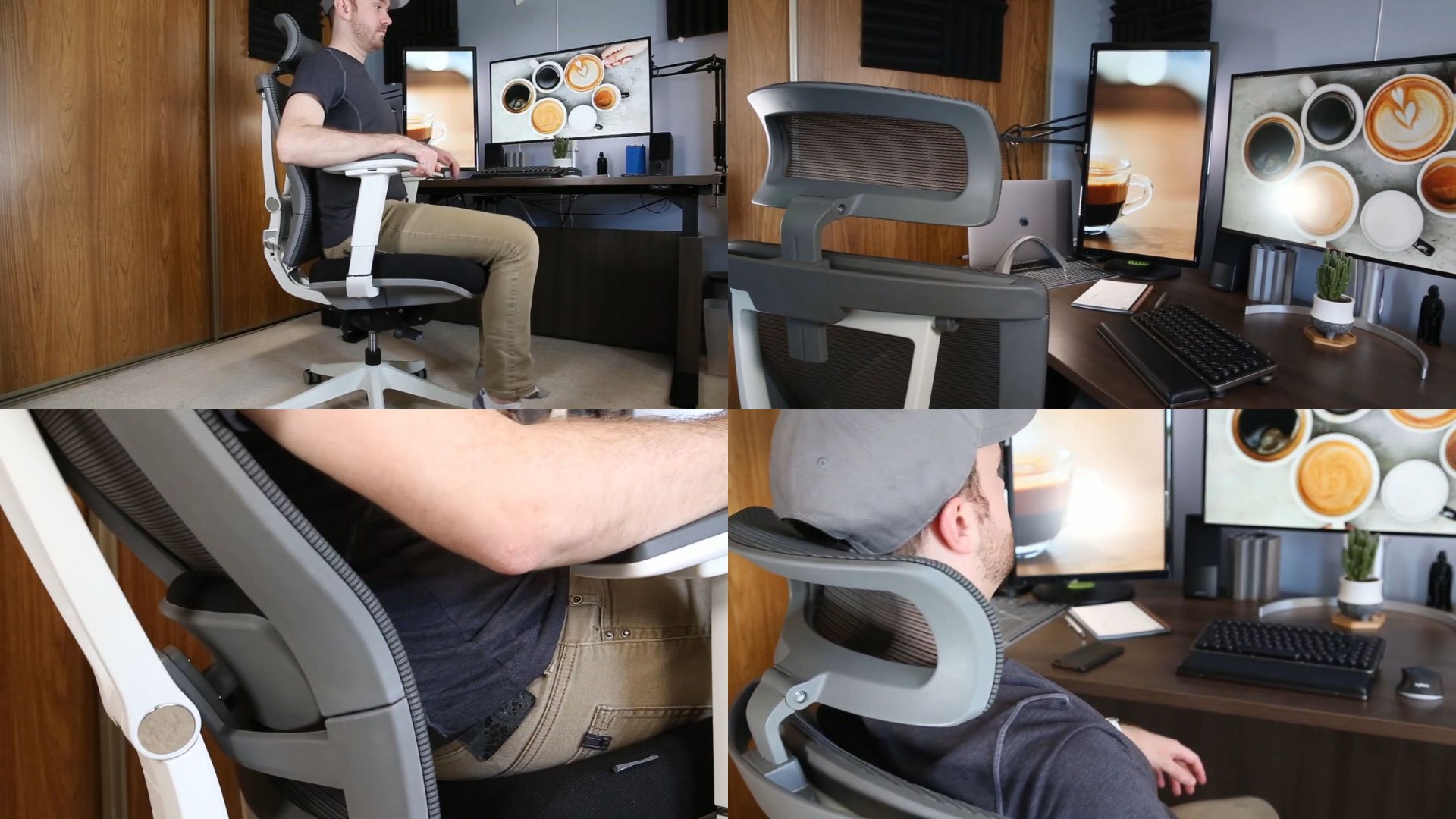
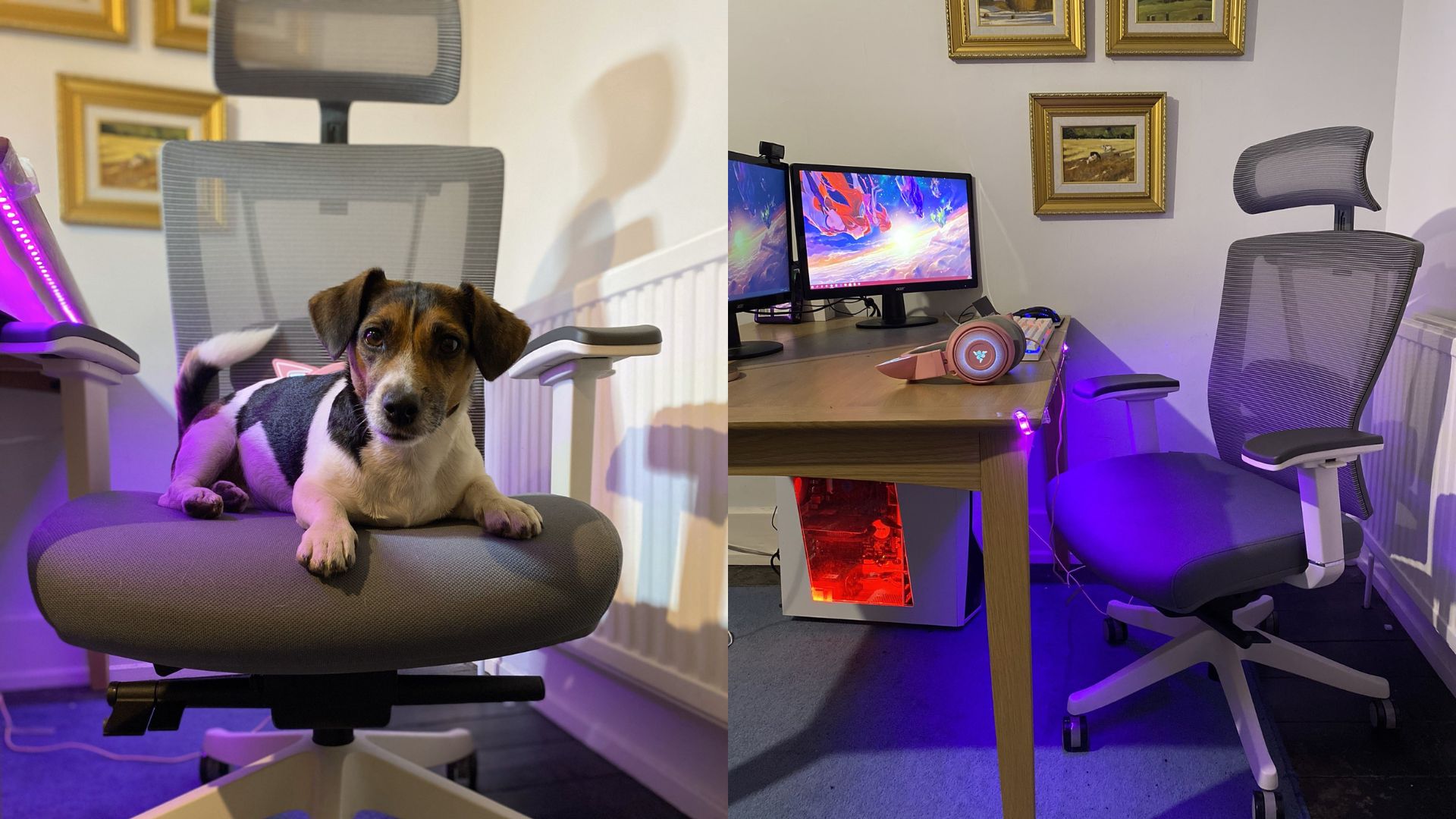
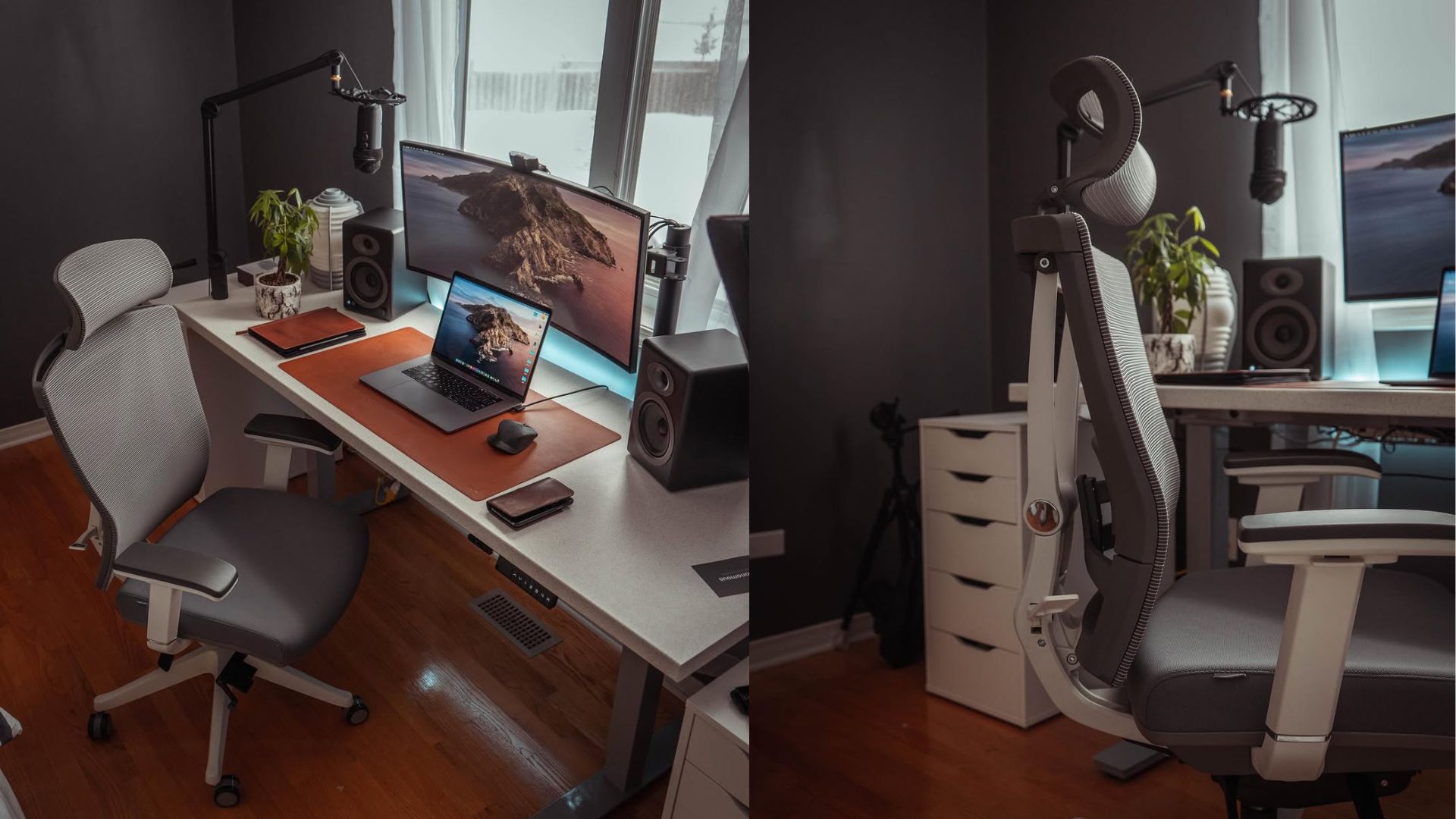
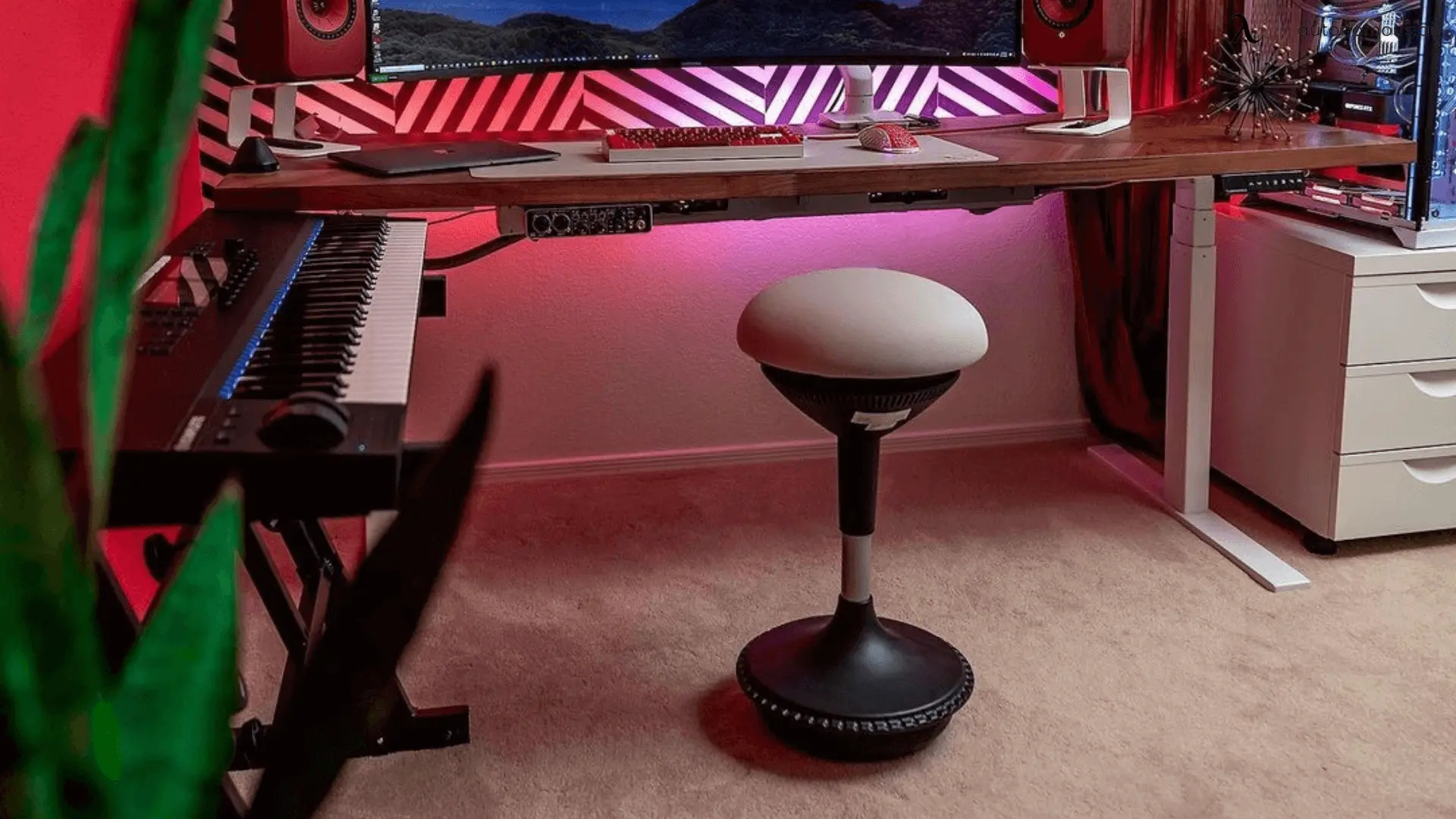
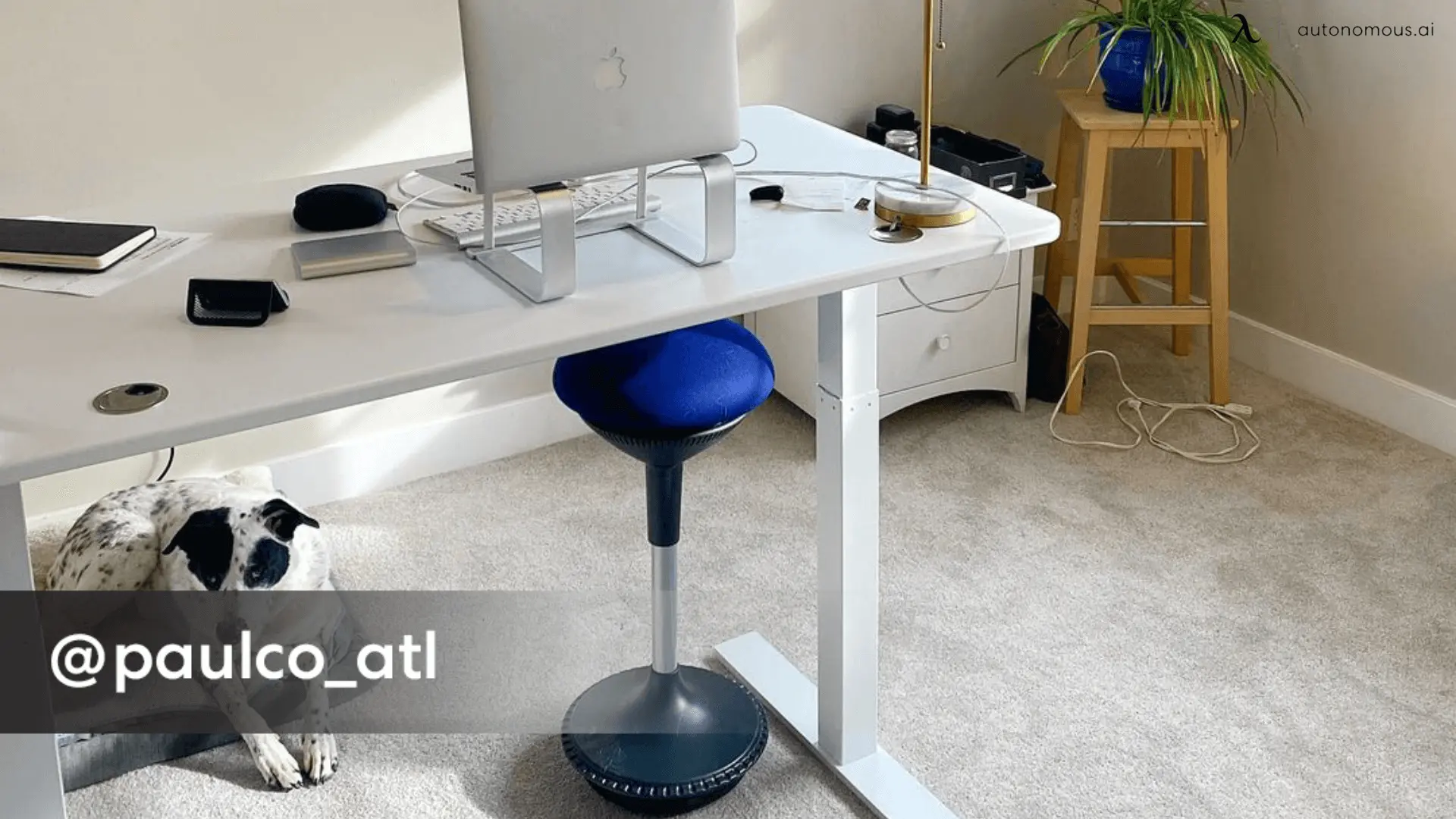
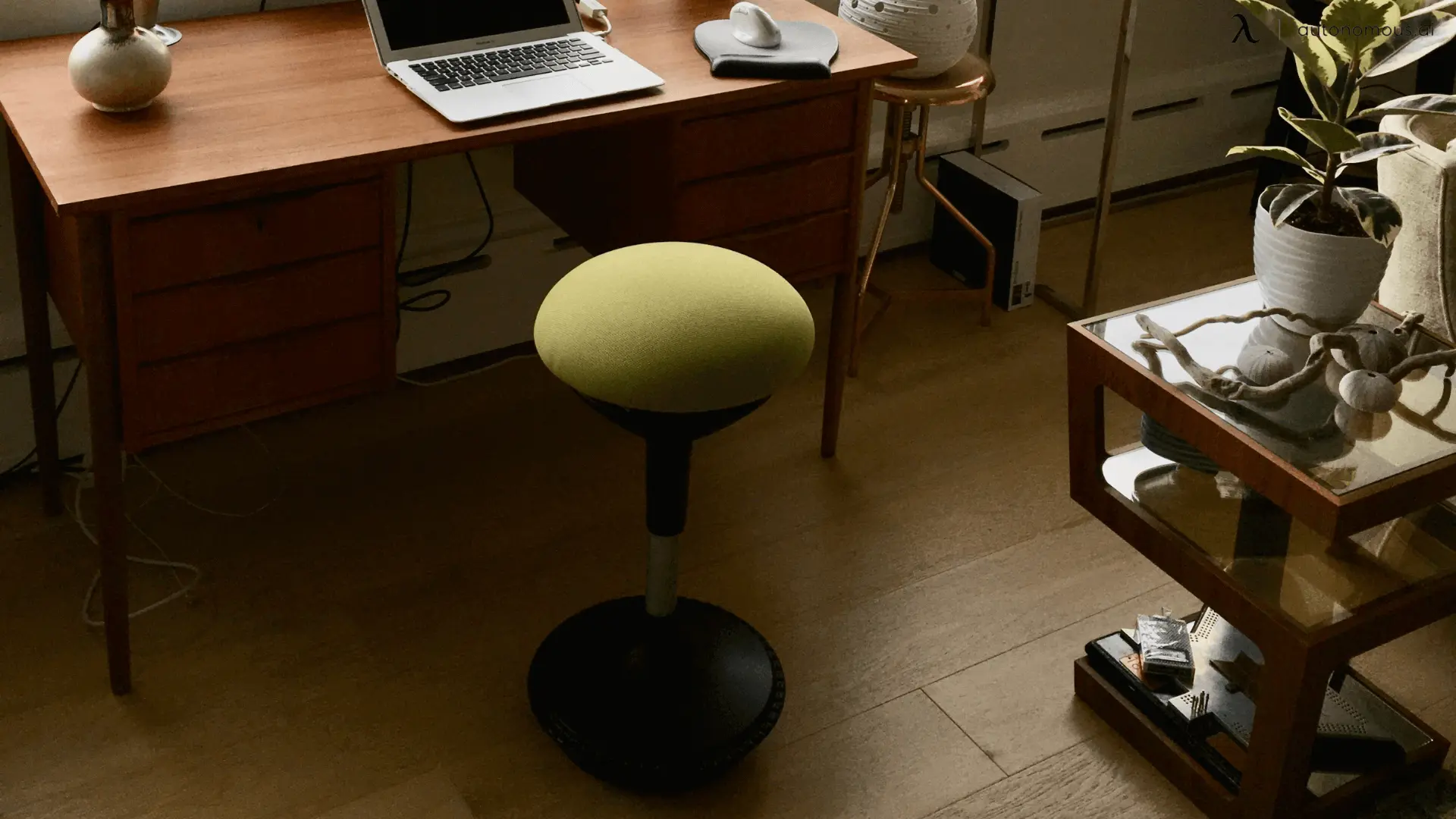


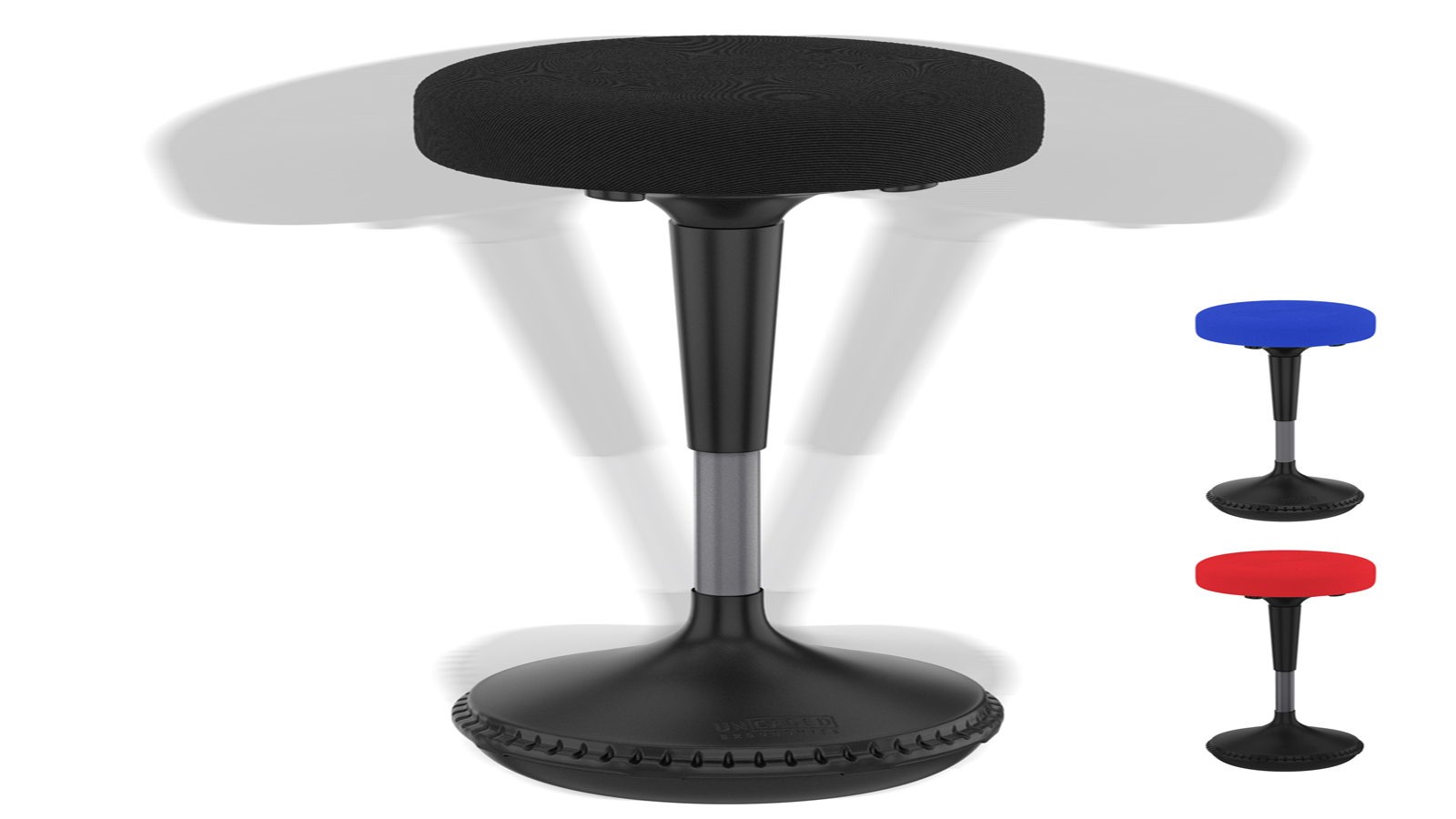


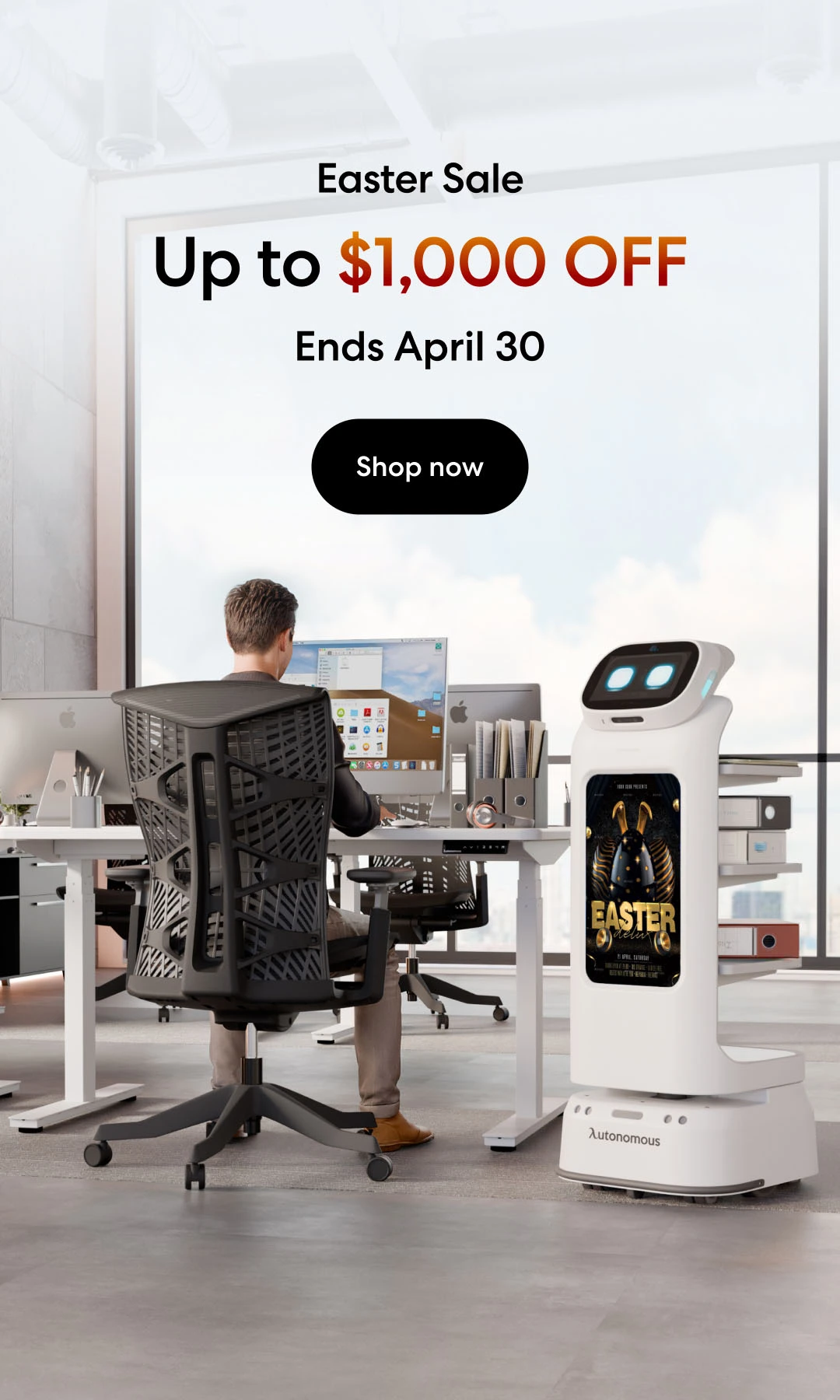
/https://storage.googleapis.com/s3-autonomous-upgrade-3/production/ecm/230914/bulk-order-sep-2023-720x1200-CTA-min.jpg)
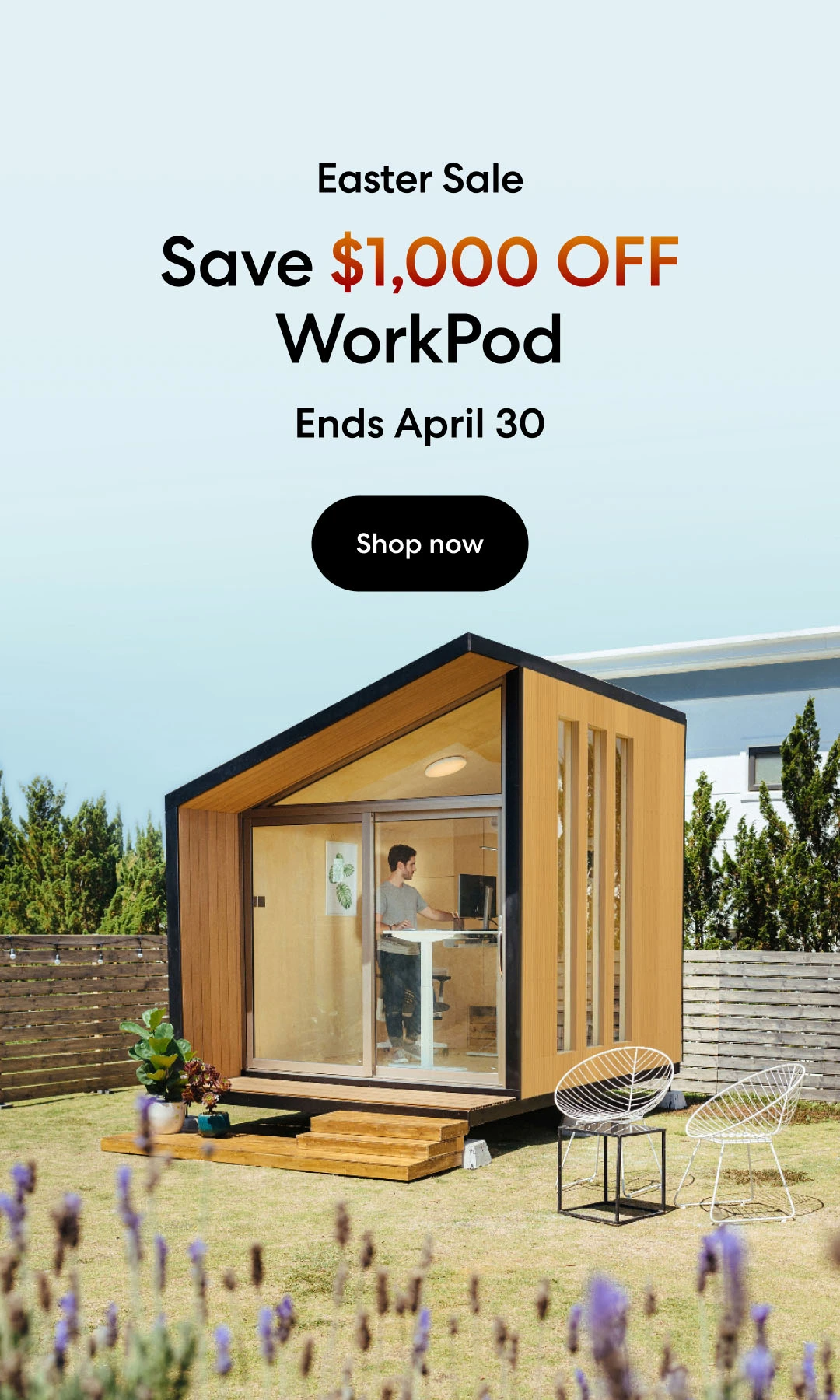
/https://storage.googleapis.com/s3-autonomous-upgrade-3/production/ecm/230824/EthanJohnson-ffebe8b4-4650-46f9-a3b3-ed980acaad86.jpg)